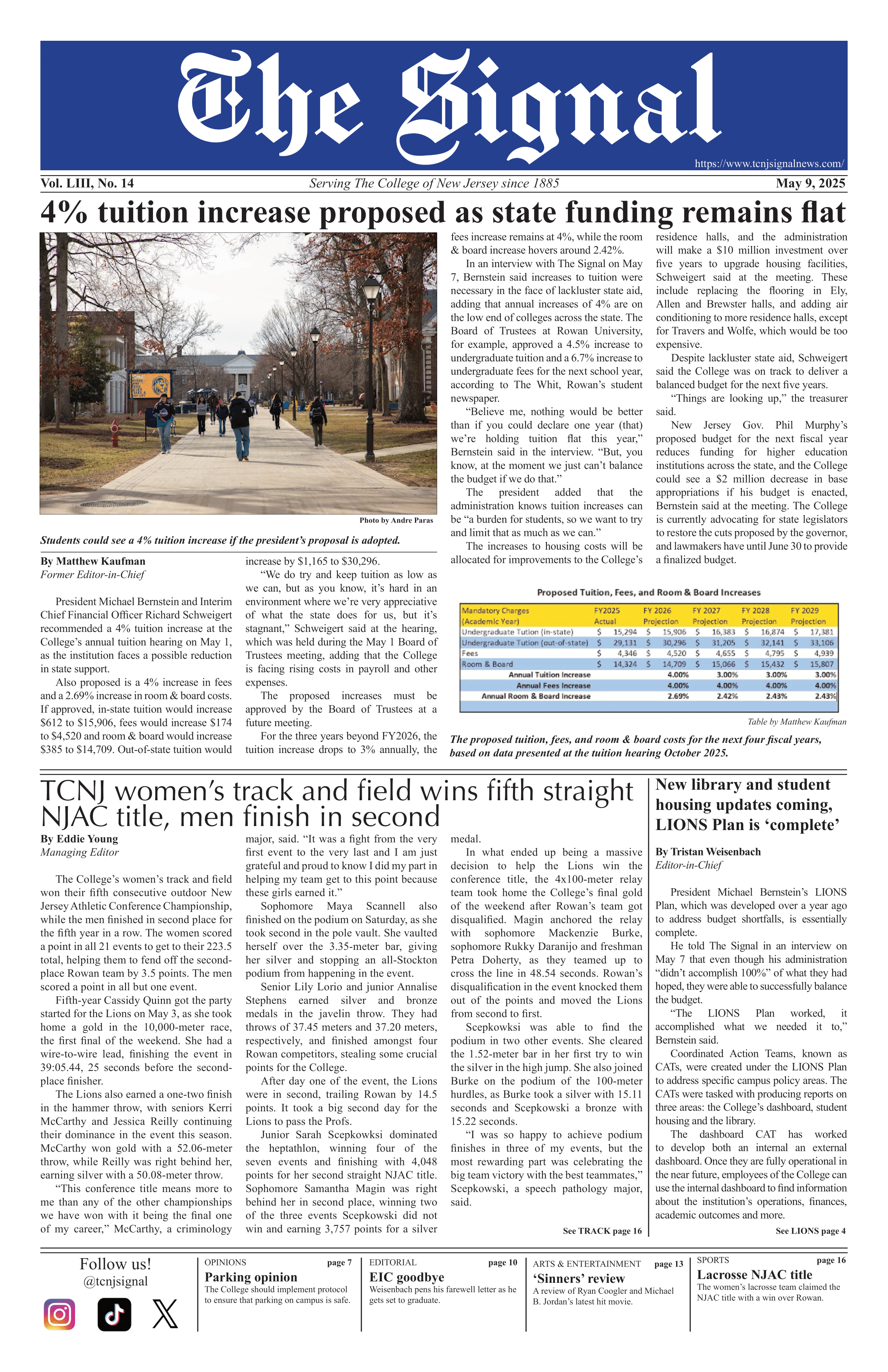By Michelle Lampariello
Former Editor-in-Chief
For some members of the College’s Class of 2023, there is a new item on the list of tasks they must complete before their first day of classes.
Between shopping for fans and dorm decor, attending orientation and purchasing their first textbooks, every member of the incoming freshman class must complete a placement test to determine if they need to take a writing course, WRI 102, and potentially WRI 101 as well, during their first year at the College.
While some students used to be exempt from taking the placement test if they had high enough standardized test scores, this year, the College has decided to make the placement test mandatory for all incoming students.
“The change really came from planning for assessment of the writing courses, from discussions about placement scoring, and checking the data on just how low a percentage of students were placing out through the writing sample,” said Director of Writing Nina Ringer. “Assuming that our cut-off scores were too low led to the discussion of writing placement for all students.”
According to Ringer, the College analyzed data regarding students’ performance in writing-intensive courses and compared it to whether or not they had placed out of WRI 102. A concern for students who narrowly made the cutoff to be exempt from the placement test, and then the course itself, rose out of the data analysis.
“I’ve definitely noticed that very few students place out through the placement test,” Ringer said. “Kit (Murphy, associate provost for curriculum and liberal learning) and I started talking about actual numbers — we looked at the last five years, and learned that no more than 20 percent of students place out through that test. So, that suggests that the cutoff scores — SAT, ACT and AP — are too low.”
Ringer and Murphy acknowledged that while AP exams measure writing ability differently, a high score on the ACT or SAT especially does not always correlate to a strong ability to write well in a collegiate setting.
They feel that students with standardized test scores that are just high enough to be exempt from the College’s placement test are likely being left behind and missing out on the chance to take a course that would help them build necessary skills to excel in writing-intensive courses.
“We’re almost probably certain that some of the ones above the (standardized test) cutoff actually need WRI 102 — they did well on the SAT, but when it comes to writing in the form that we expect here, they may not be quite as well off,” Murphy said.
A recent faculty survey about the liberal learning program, which is home to the WRI 101 and 102 courses, asked for faculty members at the College in every discipline to provide feedback about the liberal learning program. A common theme that rose out of an open-ended question on the survey that asked about potential program improvements was that many students could benefit from more writing training. This feedback supported the data Murphy had configured, and served as a supplementary factor to motivate the policy change.
For students who did not receive a score of four or better on the advanced placement exams for English Literature, English Composition, U.S. History or World History, a composite score of 26 or higher on the ACT or a 600 in math and 640 in evidence-based reading on the SAT, nothing has changed, as they would be expected to take the placement test anyway.
These were the old metrics the College used to determine whether or not it was necessary for an incoming student to take its placement test, but they are now no longer in use until the College can determine the efficacy of its policy change.
Ringer and Murphy estimate that the College will start analyzing the effects of mandating the placement test in October and November of this year. If it is determined that having every student take the placement test helps ensure that all students perform well in their writing-intensive courses, then it is possible that the College will raise the standardized test cutoff score permanently to prevent some students from slipping through the cracks.
“The bottom line for this is that we’re making sure that all students who need to get additional work on their writing get that,” Murphy said. “And the idea there is so that when they come into their mid-level writing courses, they’re not at a disadvantage.”
Students are given two hours to complete the College’s writing placement test, in which they are asked to write a response to an article. Ringer and faculty members from her department annually choose two to three articles to be used for the test so that not every student gets the same article.
“It can’t be too political; it can’t be alienating in any way to particular groups of students. You really have to look at it to see what would most appeal,” Ringer said.
The test will be available through Canvas from May 20 through June 7, according to the College’s website.
Each essay is graded on a scale from one to six. Before faculty members begin to score the essays, Ringer hosts a “norming” session to make sure that each judge is on the same page as to what quality of writing constitutes each score. Ringer selects 12 “benchmark” essays — two of each possible score, in her opinion — and then reviews them with the other writing faculty members to determine if they all share the same view on what kind of essay is representative of each score before they begin to grade individually.
Every essay is graded by two different writing faculty members and the student’s name is withheld from the document. Instead, PAWS ID numbers are used to identify which test belongs to each student.
If students earn anywhere from a four to a six, they are exempt from both WRI 101 and WRI 102. If they score a three, that means that they need to take WRI 102 — most likely during the spring of their first year, though the College offers some sections in the fall for students who could not fit in with the spring cohort for any reason. If students score a one or a two, they will need to take both WRI 101 and WRI 102, most likely taking the former during the fall of their first year and the latter in the spring.
Sections of WRI 101 are capped at eight students each and the College has never had more than five sections of the course, though Ringer noted that this could change. The class meets once a week — students meet with their instructor every other week and with a tutor on the opposite week. WRI 101 is worth two credits.
WRI 102 is a four-credit course and is similar to the freshman seminar program in that each course has a theme, but there is more time built into this course for drafting and feedback on writing assignments. Each section is capped at 16 students; for spring 2019, there are 42 sections.
Ringer and Murphy understand that for incoming students with high standardized test scores, having to take the placement test may be perceived as extra work that they feel they have earned the right to avoid. However, they are hopeful that incoming students will give the same cooperation and support that they have received from departments such as Records and Registration, which has also had to shift some of its operations due to the change.
“At first it seems like ‘oh, I have to take a writing placement test, so it’s one more thing,’” Murphy said. “But actually, they are making a contribution to improving the institution and improving the education of the students, because they are going to participate in generating data that is going to help us help students.”







